Camino de Santiago – Part 6
Before I continue sharing my journey on the Camino de Santiago, I want to extend warm Thanksgiving wishes to all my newsletter subscribers. Take a moment to appreciate the wonderful individuals and blessings in your life.
The sixth day of my journey began in the quaint little village of Beduer. As mentioned earlier, part 5 I had the pleasure of spending the night in a charming home, where I was treated to exceptional hospitality and delicious meals. That morning, I savored a delightful breakfast before bidding farewell to the other guests and my kind hosts, all while a gentle drizzle fell.
That morning, I navigated through a beautiful stretch of France by the Lot River. A highlight of the day was my two-hour visit to the picturesque town of St Cirq Lapopie. Much like Conques, this small village appeared to be plucked from a fairy tale, with its cobblestone lanes winding up the mountainside. I appreciated how France effectively keeps cars out of these historic areas, requiring visitors to park outside and walk into the village.
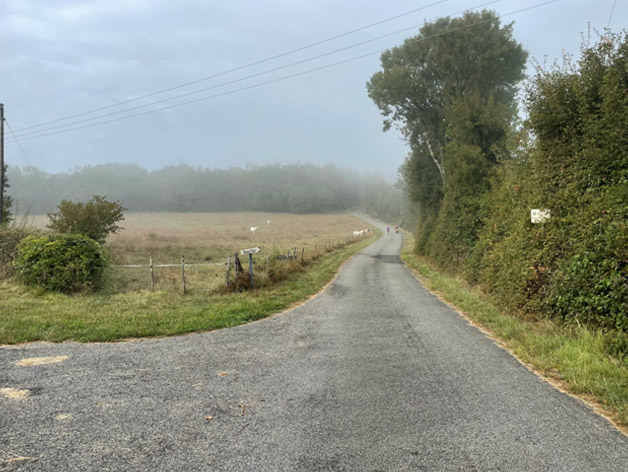
After a wonderful time in St Cirq Lapopie, I hit the road again, aiming to reach Cahors. However, my bicycle began to experience shifting issues. The gentle hills of France were demanding frequent gear changes, and my bike was showing signs of wear. Additionally, it's worth mentioning that new bikes generally need a quick adjustment after some use, which I had neglected to do. As I neared Cahors, the light drizzle transformed into a torrential downpour, leaving my bicycle nearly impossible to ride as it struggled to get into any gear.
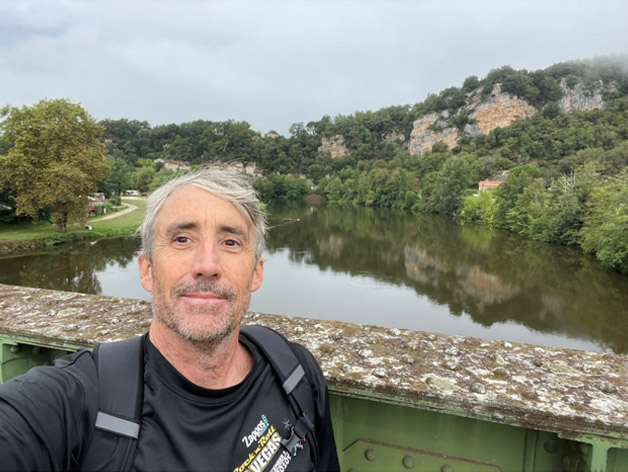
Cahors is a charming city situated along a bend in the Lot River and is famous as the origin of merlot wine. Upon finally arriving at the city center amid pouring rain, I faced a challenge in finding accommodations. A helpful lady at the tourist office made a few calls, checking availability and prices at local establishments. I decided on one conveniently located near the train station.
Once I was settled into my room and had a chance to dry off, I borrowed an umbrella from the hotel for a stroll around the city. Unlike every other location in France since Léon, Cahors had a flat terrain. Nestled in a bend of the Lot River, it boasts stunning bridges crossing over, with the most iconic being the Pont Valentré, which features three medieval towers. The Camino trail goes right over this celebrated bridge.
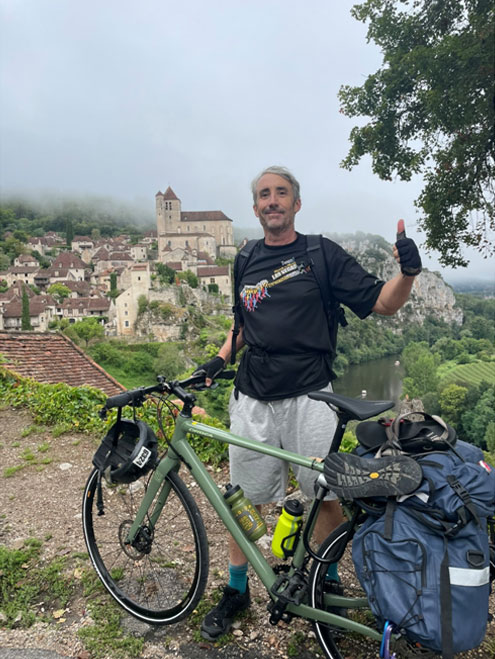
Just as I finished exploring the Pont Valentré, the rain suddenly stopped. I couldn't remember encountering such a swift change in the weather before. It was pleasant to walk alongside the river, although I was dressed too warmly for the weather with my rain gear. I had two main tasks for the day: doing laundry and fixing my bicycle. Given that it was a Sunday, I anticipated these tasks would be challenging.
Regarding the laundry, my map app pointed me toward a location in the city center, close to the tourist office. Based on an image I had seen, it should have been a set of coin-operated outdoor machines similar to the ones I found in Aumont-Aubrac. Unfortunately, this facility did not exist. I opted to wash my clothes in my hotel room, assuming they would dry overnight, but this turned out to be a poor choice. Although cleaning the clothes was straightforward, getting them dry proved to be nearly impossible. Using a hairdryer simply heated the damp garments without effectively drying them.
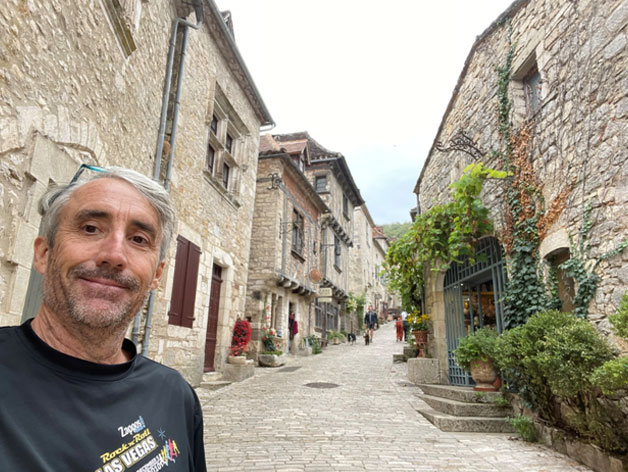
Concerning my bicycle repairs, the Apple maps indicated two locations, but both were closed on Sundays and Mondays. This was something I had encountered previously in France—many small businesses tend to close for a few hours around noon and are entirely shut on Sundays and Mondays. This also applies to many restaurants, especially in Cahors. Fortunately, I was able to find one open for dinner.
While dining, I had to revise my strategy. Neither bike shop would open until Tuesday, and although Cahors was lovely, it was a small town where one could see the main attractions within a few hours. I wished to avoid being stranded in a location for an entire day as I experienced in Conques.
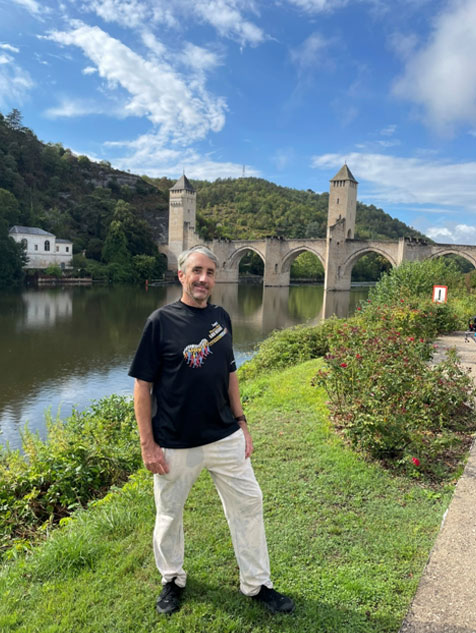
It's important to note that I was seriously falling behind my original schedule. I had already made the decision to skip part of the Camino if I wanted to reach Santiago, but I had yet to figure out the specifics. It's also worth mentioning that Cahors has a train station, located nearly across from my hotel. It seemed logical to use Monday to travel by train towards or directly to Spain.
Another factor to consider was my desire for a flat, sunlit area of the Camino after ascending and descending mountainous terrains in France since my journey began. The Camino route goes over the Pyrenees, the mountain range separating France and Spain, and I was reluctant to take my bike over that section. Moreover, if I recall correctly, there were no train services available in that area of the Camino.

One potential route was to board a series of trains to Bayonne, a coastal city just north of the Spanish border. From there, I'd be able to access the Northern Way, which is a less trodden path on the Camino lining the northern coast of Spain. However, Mark, the free-spirited guy I met in Conques, mentioned that this Camino route was quite hilly—not exactly what I was looking for. I was keen to find a flat and sunny route.
After extensive deliberation and some research, I decided to take the train to Burgos, Spain. This journey would span two days and require five train transfers, but I couldn’t identify a better option. Plus, I have a fondness for train travel. This itinerary would allow me to pass through Bayonne, a place I had anticipated visiting. This adjustment would dramatically reduce my total distance from 900 miles to 500. Yet, I was starting to realize that the essence of the Camino was not centered around speed or destination but rather the experience itself.
Stay tuned for the next installment, part 7, where I embark on that journey.
November 21, 2024 Question
Imagine 12 pearls in front of you, with 11 being genuine and one being a counterfeit. All the real pearls have the same weight, while the impostor is either heavier or lighter. Using a balance scale, how would you identify the fake pearl and determine whether it is lighter or heavier within just three weighings?
November 28, 2024 Answer
- 1. Weigh 4 vs. 4
- 2. If step 1 shows an imbalance, proceed to step 3; otherwise, continue to step 11.
- 3. Mark the four pearls on the heavy side from step 2 as H, those on the light side as L, and the remaining four as R (denoting real).
- 4. Weigh HHLL vs. HLRR.
- 5. If the HHLL side from step 4 rises, go to step 8.
- 6. If the HHLL side from step 4 descends, go to step 9.
- 7. If both sides from step 4 are balanced, proceed to step 10.
- 8. One of the LL pearls from the HHLL side is too light, or the H pearl from the HLRR side is too heavy. Weigh an L against the H. If the L dips, it’s fake and too light. If the H dips, it's counterfeit and too heavy. If they balance out, the other unweighed L pearl from weighing 2 is the fake and too light.
- 9. One of the HH pearls from the HHLL side is too heavy, or the L pearl from the HLRR side is too light. Weigh an H against the L. If the H dips, it's fake and too heavy. If the L rises, then it's fake and too light. If both sides balance, the other unweighed H pearl from weighing 2 is the fake and too light.
- 10. The H or L pearl from weighing 1 that wasn't weighed in the second weighing is the counterfeit. Weigh them against any two real pearls. If the HL side dips, the H pearl is the fake and too heavy. Conversely, if the HL side rises, the L pearl is the counterfeit and too light.
- 11. Mark the eight pearls weighed in step 1 as R (for real) and the other four as Q (for questionable).
- 12. Weigh QQQ against RRR. If the QQQ side goes up, proceed to step 13. If it goes down, go to step 14. If they balance, go to step 15.
- 13. One pearl from the QQQ group in step 12 is fake and too heavy. Weigh two of them against each other. If one side dips, the pearl on that side is fake. If they balance, the other unweighed Q pearl from weighing 3 is the counterfeit.
- 14. One of the QQQ pearls from step 12 is counterfeit and too light. Weigh any two of them against each other. If one side elevates, the pearl on that side is fake. If they balance, the other unweighed Q pearl from weighing 3 is counterfeit.
- 15. The unweighed Q pearl from weighing 2 is fake. Weigh it against any other pearl. If its side of the scale dips, it's too heavy. If it rises, it's too light.
November 28, 2024 Question
What is the best way to arrange ten buttons into five rows, each containing four buttons?


